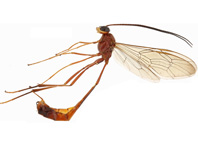Abstract
A new crested amphipod, Epimeria cleo sp. nov., is described after specimens collected in the western Ross Sea, Southern Ocean, at 151–409 m depth. This increases the number of Epimeria species known from the Ross Sea to eleven. This new species belongs to the subgenus Drakepimeria d'Udekem d'Acoz & Verheye, 2017. E. cleo sp. nov. has very robust walking pereiopods, no mid-dorsal tooth or bump on pereonites 1–2, no lateral tooth or angle on the lateral carina of coxa 4 and no pair of small teeth pointing upwards on urosomite 2. It is morphologically very similar to Epimeria leukhoplites d'Udekem d'Acoz & Verheye, 2017, E. reoproi Lörz & Coleman, 2001 and E. vaderi Coleman, 1998, the latter three species being known only from the Antarctic Peninsula and South Shetland Islands. Epimeria cleo sp. nov. can be distinguished from them by the following combination of characters: flexed rostrum, narrow coxa 3, long ventral tooth on coxa 4 and non-duplicate lateral tooth on pleonites 1–2. The phylogenetic relationships between E. cleo sp. nov. and other Epimeria of the subgenus Drakepimeria, for which DNA sequences are available, are briefly outlined based on a phylogenetic analysis of 28S rDNA fragments.
References
Chevreux, E. (1912) Amphipodes. Deuxième Expédition Antarctique Française (1908–1910) commandée par le Dr. Jean Charcot. Sciences Naturelles: Documents Scientifiques, 79, 10–186.
Coleman, C.O. (1998) Epimeria vaderi, a new species (Crustacea, Amphipoda, Epimeriidae) from the Antarctic Ocean. Zoosystematics and Evolution, 74, 215–224.
https://doi.org/10.1002/mmnz.19980740205
Coleman, C.O. (2003) "Digital inking": how to make perfect line drawings on computers. Organism, Diversity and Evolution, Electronic Supplement 14, 1–14.
Coleman, C.O. (2007) Synopsis of the Amphipoda of the Southern Ocean; Volume 2: Acanthonotozomellidae, Amathillopsidae, Dikwidae, Epimeriidae, Iphimediidae, Ochlesidae and Vicmusiidae. Bulletin de l’Institut Royal des Sciences Naturelles de Belgique, 77 (Supplement 2), 1–142.
Coleman, C.O. (2009) Drawing setae the digital way. Zoosystematics and Evolution, 85, 305–310.
https://doi.org/10.1002/zoos.200900008Darriba, D., Taboada, G.L. & Posada, D. (2012) jModelTest 2: more models, new heuristics and parallel computing. Nature Methods, 9, 772.
https://doi.org/10.1038/nmeth.2109d'Udekem d'Acoz, C. & Robert, H. (2008) Systematics and ecological diversity of amphipods. In: Gutt J. (Ed.), The Expedition ANTARKTIS-XXIII/8 of the Research Vessel "Polarstern" in 2006/2007. Berichte zur Polar- und Meeresforschung, 569, pp. 48–56.
d'Udekem d'Acoz, C. & Verheye, M.L. (2017) Epimeria of the Southern Ocean with notes on their relatives (Crustacea, Amphipoda, Eusiroidea). European Journal of Taxonomy, 359, 1–53.
Katoh, K. & Standley, D.M. (2013) MAFFT multiple sequence alignment software version 7: improvements in performance and usability. Molecular Biology and Evolution, 30, 772–780.
https://doi.org/10.1093/molbev/mst010Lecointre, G., Améziane, N., Boisselier, M.-C., Bonillo, C., Busson, F., Causse, R., Chenuil, A., Couloux, A., Coutanceau, J.-P., Cruaud, C., d’Udekem d’Acoz, C., De Ridder, C., Denys, G., Dettaï, A., Duhamel, G., Eléaume, M., Féral, J.-P., Gallut, C., Havermans, C., Held, C., Hemery, L., Lautrédou, A.-C., Martin, P., Ozouf-Costaz, C., Pierrat, B., Pruvost, P., Puillandre, N., Samadi, S., Saucède, T., Schubart, C. & David, B. (2013) Is the species flock concept operational? The Antarctic shelf case. PLoS ONE, 8, e68787.
https://doi.org/10.1371/journal.pone.0068787
Lörz, A.-N. & Coleman, C.O. (2001) Epimeria reoproi n. sp., a new amphipod (Epimeriidae) from the Antarctic. Crustaceana, 74, 991–1002.
https://doi.org/10.1163/15685400152682728Lörz, A.-N., Maas, E.W., Linse, K. & Fenwick, G.D. (2007) Epimeria schiaparelli sp. nov., an amphipod crustacean (family Epimeriidae) from the Ross Sea, Antarctica, with molecular characterisation of the species complex. Zootaxa, 1402 (1), 23–27.
https://doi.org/10.11646/zootaxa.1402.1.2
Lörz, A.-N., Maas, E.W., Linse, K. & Fenwick, G.D. (2007) Epimeria schiaparelli sp. nov., an amphipod crustacean (family Epimeriiidae) from the Ross Sea, Antarctica, with molecular characterisation of the species complex. Zootaxa, 1402, 23–37.
Lörz, A.-N. (2011) Pacific Epimeriidae (Amphipoda: Crustacea): Epimeria. Journal of the Marine Biological Association of the United Kingdom, 91, 471–477.
https://doi.org/10.1017/S0025315410001086
Lörz, A.-N. & Held, C. (2004) A preliminary molecular and morphological phylogeny of the Antarctic Epimeriidae and Iphimediidae (Crustacea, Amphipoda). Molecular Phylogenetics & Evolution, 31, 4–15.
https://doi.org/10.1016/j.ympev.2003.07.019Lörz, A.-N., Maas, E.W., Linse, K. & Coleman, C.O. (2009) Do circum-Antarctic species exist in peracarid Amphipoda? A case study in the genus Epimeria Costa, 1851 (Crustacea, Peracarida, Epimeriidae). Zookeys, 18, 91–128.
https://doi.org/10.3897/zookeys.18.103Lörz, A.-N., Smith, P., Linse, K. & Steinke, D. (2012) High genetic diversity within Epimeria georgiana (Amphipoda) from the southern Scotia Arc. Marine Biodiversity, 42, 137–159.
https://doi.org/10.1007/s12526-011-0098-8Rambaut, A. & Drummond, A. (2005) Tracer, a program for analyzing results from Bayesian MCMC programs such as BEAST & MrBayes, version 1.3. Oxford. Available from: http://evolve/zoo.ox.ac.uk/software.html?id=tracer/ (accessed 28 November 2017)
Rauschert, M. & Arntz, W.E. (2015) Antarctic Macrobenthos. A field guide of the invertebrates living at the Antarctic seafloor. Arntz & Rauschert Selbstverlag, Deichweg, 143 pp.
Ronquist, F. & Huelsenbeck, J.P. (2003) MrBayes 3: Bayesian phylogenetic inference under mixed models. Bioinformatics, 19, 1572–1574.
https://doi.org/10.1093/bioinformatics/btg180
Verheye, M.L., Backeljau, T. & d'Udekem d'Acoz, C. (2016) Looking beneath the tip of the iceberg: diversification of the genus Epimeria on the Antarctic shelf (Crustacea, Amphipoda). Polar Biology, 39, 925–945.
https://doi.org/10.1007/s00300-016-1910-5Walker, A. (1906) Preliminary descriptions of new species of Amphipoda from the Discovery Antarctic Expedition, 1902–1904. Annals and Magazine of Natural History, Series 7, 17, 452–458.

